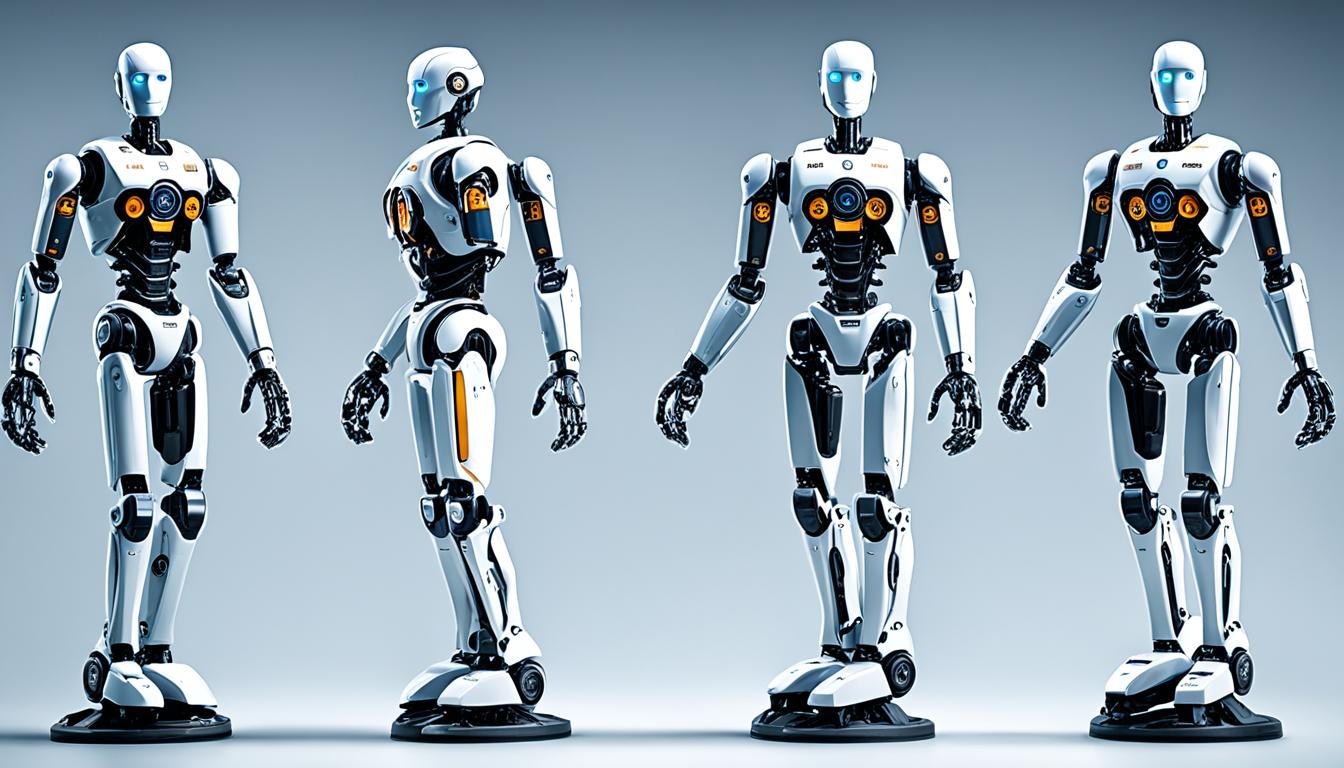Last Updated on December 9, 2025
As we enter a new era, robotics technology is revolutionizing work. In today’s world, where efficiency and productivity are key, industries are embracing robotic automation. This shift towards automated workplaces marks a significant transformation. Companies are using advanced technologies to stay ahead in the market.
The National Institute for Occupational Safety and Health (NIOSH) has launched initiatives to address the safety and health concerns arising from these changes. The future of work holds promise with robotics, offering solutions for safety and health issues. These include reducing health risks such as immune and musculoskeletal disorders.
In sectors like agriculture, healthcare, and transportation, robotics is crucial for improving workplace dynamics. These advancements boost productivity and enhance safety and well-being for employees. As robots become more common, their impact on workplaces is set to be profound.
Key Insights
- Robotics technology is transforming workplaces for enhanced efficiency and productivity.
- NIOSH focuses on occupational safety in the context of increasing robotic usage.
- Many sectors are utilizing robotics to enhance operational capabilities.
- The move towards automated workplaces is a crucial aspect of the future of work.
- Investing in robotics can lead to significant economic benefits for industries.
Introduction to Robotics in the Workplace
Robotics is revolutionizing the workplace across various sectors. Their ability to boost productivity and efficiency is crucial. As labor shortages persist and demands rise, robotics offers a solution.
Automation has surged, altering traditional job roles in manufacturing, healthcare, and logistics. The U.S. saw a 10% increase in industrial robots in 2022. This trend shows a growing dependence on automated systems for efficiency.
Service robots are also on the rise, with a 48% increase in sales in the U.S. in 2022. Companies like Dynamic Group use both industrial and collaborative robots to improve manufacturing. This highlights robotics’ versatility and effectiveness.
It’s essential to understand how these technologies integrate into the workplace. Companies must follow safety standards, including ISO guidelines, to reduce robotic risks. NIOSH’s efforts, like the Center for Occupational Robotics Research, aim for safe and productive work environments amidst changing dynamics.
The Evolution of Robotics Technology
The evolution of robotics technology has significantly expanded its reach, moving beyond traditional sectors. Initially, industrial robotics was limited to repetitive tasks on factory floors. Now, advancements have led to systems capable of complex decision-making and human interaction.
Today, robots are categorized into three main types: remote-controlled, pre-programmed, and autonomous. These machines perform a variety of tasks in workplaces, including:
- Industrial facility inspection
- Machine tending and parts repositioning
- Pick-and-place work
- Gauge-reading and hazardous materials handling
- Precision cutting and welding
With the advent of autonomous mobile robots, automated guided vehicles, articulated robots, humanoid robots, and cobots, the scope of industrial robotics is broadening. This progress offers numerous advantages, such as enhanced safety and health by reducing fall risks and musculoskeletal disorders.
Despite the promising future of robotics, challenges persist. High costs and potential disruptions in work operations are concerns for many sectors. The debate over the impact on employment is ongoing, with some predicting significant job displacement and others foreseeing the creation of more jobs than those lost.
Impact of Robotics Workplaces on Productivity
The advent of robotics has revolutionized productivity in the workplace. Automation has led to a significant increase in efficiency, reducing waste and enhancing process flow. Robots now handle tasks with greater consistency, showcasing the benefits of automation.
Increased Efficiency through Automation
Integrating robotics into daily operations boosts overall efficiency. Automated systems now manage routine tasks swiftly and accurately, freeing up human resources for strategic endeavors. This shift enables businesses to gain a competitive edge in the market.
Reduction of Error Rates
Robotics plays a crucial role in lowering error rates. Human error in repetitive tasks can compromise quality. By using machines for precision tasks, organizations can significantly reduce mistakes. This focus on quality enhances customer satisfaction and strengthens brand reputation.
Freeing Up Human Workers for Creative Tasks
Automation’s most notable benefit is the freedom it gives to human workers. Machines take over mundane tasks, allowing employees to focus on creative and innovative projects. This shift encourages a culture of creativity and boosts team engagement, leading to increased productivity.
Safety and Well-being in Automated Workplaces
Robotics technology is revolutionizing worker safety across various industries. These machines now handle dangerous tasks, reducing risks to human workers. It’s vital to grasp how automated workplaces affect health and well-being as we look to the future of work.
Robots Performing Dangerous Tasks
Many fields now see robots taking on perilous tasks, significantly lowering injury risks for humans. This is the case in construction, oil drilling, agriculture, and healthcare, where:
- Robots inspect offshore oil rigs, reducing dangers in extreme weather.
- Automated systems apply pesticides on farms, cutting down on exposure to harmful chemicals.
- Healthcare robots assist in lifting and transporting patients, reducing manual handling risks for staff.
- Robots help reduce motor vehicle accidents among delivery drivers through precise navigation and load optimization.
Impact on Worker Health and Safety Assurance
The integration of robotics brings both benefits and challenges. While it enhances worker safety, it also introduces new safety concerns. Workers may feel uneasy around robots, especially in busy areas like warehouses or construction sites. Moreover, current safety laws might not keep pace with robotics advancements, potentially leading to more workplace injuries.
The CDC’s Center for Occupational Robotics Research is tackling these problems. It aims to improve worker safety by:
- Understanding how to prevent injuries in automated settings.
- Examining human-robot interactions to develop best practices for collaboration.
- Tracking incidents related to robotics to inform future safety guidelines.
In conclusion, while robots are crucial for improving worker safety, managing human-robot interactions is key. Collaboration among industry players is essential. It ensures that robotic safety measures boost productivity and protect the health and well-being of all employees.
The Role of AI in Manufacturing Robotics
AI has transformed manufacturing by integrating intelligent robotics into production seamlessly. These systems do more than just automate tasks; they analyze data to spot workflow inefficiencies. By using AI algorithms, manufacturers can optimize their operations in ways previously unimaginable.
The automotive and electronics sectors have seen significant benefits from this integration. Robots with smart capabilities tackle complex tasks like painting and welding efficiently. This has led to a notable increase in production speed and quality. SMEs that adopt AI-powered robotics often see substantial improvements in efficiency and product quality, giving them a competitive edge.
In the realm of smart manufacturing, AI’s impact on quality control and waste reduction is profound. Robotics systems can identify patterns and adjust processes to minimize downtime and waste. For instance, AutoStore’s robotic order fulfillment technology has boosted picking accuracy by 30% and sped up order processing significantly.
Advanced robotics not only boosts productivity but also enhances workplace safety. Robots take on hazardous and physically demanding tasks, reducing the risks associated with manual labor. This allows human workers to concentrate on more creative and complex tasks, creating a healthier work environment.
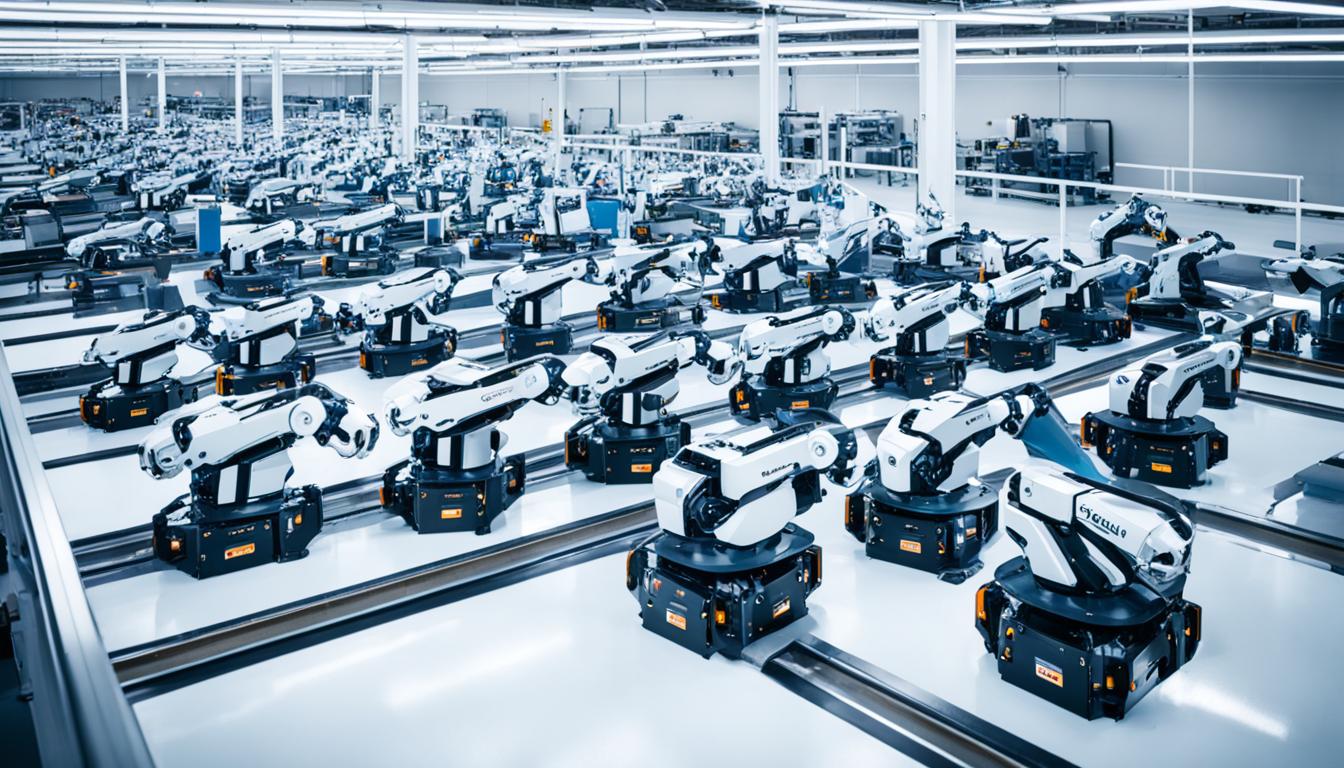
Initiatives like those from Capitol Tech aim to bridge the talent gap in robotics. They provide individuals with skills in robotic programming, engineering, and AI. As robotics expands into sectors like construction and retail, these educational programs are vital for creating a workforce ready for smart manufacturing challenges.
The Rise of Smart Factories and Industry 4.0
The shift from traditional manufacturing to smart factories represents a significant leap towards Industry 4.0. This evolution is driven by the integration of advanced technologies like robotics and IoT. The result is a notable improvement in efficiency and a heightened potential for better resource management and operational effectiveness.
Integration of Internet of Things (IoT)
Smart factories utilize IoT to facilitate real-time monitoring and data exchange across production lines. Through sensors and RFID tags, manufacturers can monitor equipment conditions, streamline workflows, and schedule maintenance precisely. This interconnectedness creates a more agile manufacturing environment. IoT integration boosts transparency in production, supports predictive maintenance, and cuts downtime due to equipment failures.
Enhancing Efficiency and Resource Management
Industry 4.0 has ushered in new efficiencies in manufacturing, mainly by automating repetitive and hazardous tasks. Robotics enables factories to perform operations rapidly and with precision, reducing human error and boosting productivity. The focus on smart factories necessitates adaptation, creating new roles in programming, maintenance, and equipment servicing. This transformation enhances resource management, fostering a culture of innovation and continuous improvement.
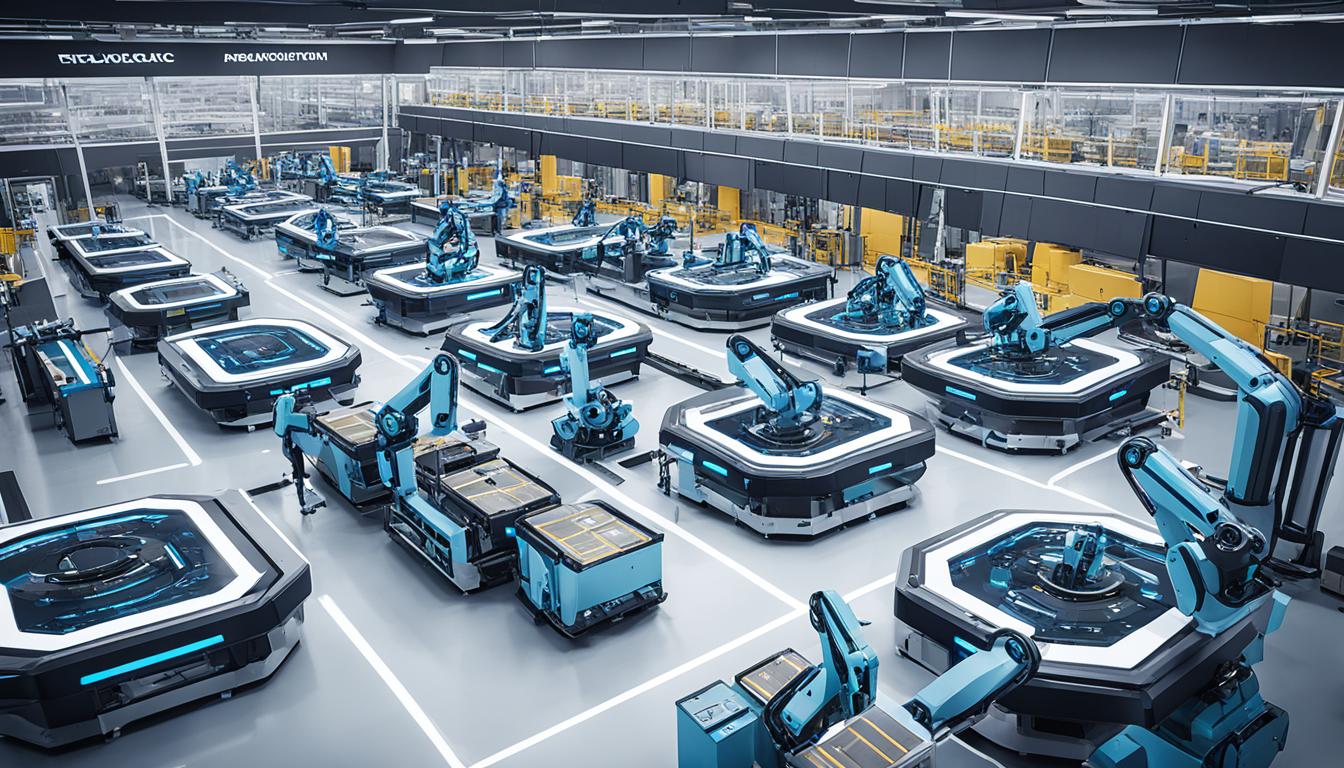
Challenges of Integrating Robotics in Different Industries
Integrating robotics across various sectors encounters numerous hurdles. Despite the notable benefits, the path to success is fraught with challenges. Key obstacles include human-robot collaboration difficulties and the need for workforce adaptation.
Human-Robot Collaboration Difficulties
Effective human-robot collaboration poses a significant challenge. Many lack the skills to manage advanced robotics, leading to gaps in functionality and safety. Each robot’s unique features introduce inconsistencies, especially when dealing with multiple manufacturers. To overcome this, additional training and clear communication protocols are essential. Creating a culture of teamwork is also crucial for seamless human-robot interaction.
Skill Gaps and Workforce Adaptation Issues
The robotics sector’s growing need for skilled labor highlights the importance of workforce adaptation. As industrial robots assume more roles, upskilling the workforce becomes imperative. Investing in training programs is essential to boost facility performance and ensure effective automation collaboration. Assessing current workflows and identifying potential hurdles is a crucial first step. Organizations must tackle resistance to change by fostering a culture of adaptability. This approach helps navigate the ever-evolving technology landscape.
The Future Job Landscape with Robotics
The integration of robotics across sectors is transforming the job landscape, creating a complex interplay between job loss and new opportunities. Robotics technologies aim to boost productivity and efficiency, but they also pose concerns about the erosion of traditional roles.
Job Displacement vs. Job Creation
The advent of full-scale robotics and artificial intelligence stirs fears of job displacement. Many routine or manual jobs might disappear, leaving workers struggling to adapt. However, these advancements also give rise to new roles that demand human skills like creativity, empathy, and problem-solving. This evolution means while some jobs may decline, others will emerge that complement robotic systems.
Importance of Upskilling and Reskilling
Adapting to this change requires a focus on upskilling and reskilling. Companies must actively support their employees in mastering new technological demands. Initiatives in emerging skills, such as machine learning and robotic process automation, are vital for keeping employees competitive and ready for new opportunities. For more on preparing for this shift, explore innovative strategies for workforce readiness.
Emergence of Human-Centric Skill Needs
As robotics advances, so does the need for human-centric skills. Jobs now require a mix of technical skills and soft skills. The future job market will value roles that augment human capabilities rather than replace them. This shift highlights the importance of emotional intelligence, creative thinking, and teamwork. Employers will seek workers who can collaborate with robots and offer unique perspectives on complex issues.
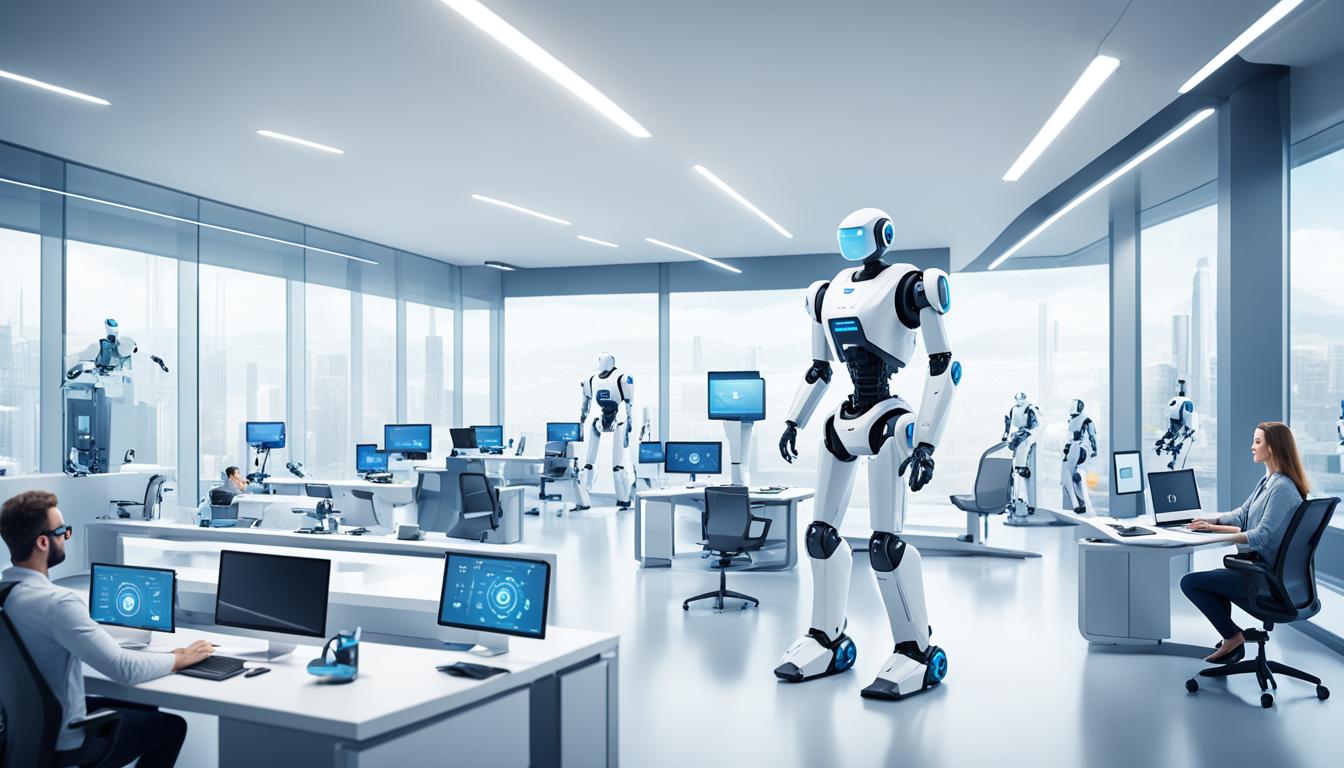
Robotics Workplaces and Economic Growth
The rise of robotics in workplaces is crucial for economic growth. Studies across 17 countries show that industrial robots lead to a 0.36% GDP growth annually. Companies embracing robotics see a boost in productivity and a decrease in production costs. This makes them more competitive in the market.
Robotics technology brings about changes that lead to higher wages, lower prices, and a wider range of products and services. These advancements improve living standards mainly through increased labor productivity. Companies tend to create new, high-paying jobs that require skilled workers for innovation and high-value tasks. At the same time, they automate simpler tasks.
Technology has always driven efficiency improvements across sectors, from farming tools to assembly-line robots. Automation and robotics may threaten low-skilled jobs but also increase efficiency and productivity. The global industrial robot market is expected to hit nearly $70.6 billion by 2028, indicating strong growth.
In the U.S. Midwest, the robotic workforce supports manufacturing, even with potential job displacement. A 2018 report showed that more robotics leads to jobs like data analysts and software developers. These roles meet the changing workforce needs. Companies are now using collaborative robots, or cobots, to improve employee engagement without threatening job security.
The shift towards automation in the future highlights the need for adapting workforce strategies. This change means while robotics may eliminate some jobs, it will also create new ones. This underscores the importance of economic growth in a rapidly evolving job market.
Best Practices for Safe Robotics Integration
Integrating robotics into the workplace offers significant advantages but requires careful consideration. Effective safety protocols are essential to leverage robotics benefits while protecting employees. A structured approach, focusing on preventive measures and industry standards, ensures a secure work environment.
Preventive Strategies for Worker Safety
Preventive strategies are crucial for safeguarding workers during robotics integration. Consider these strategies:
- Risk Assessment: Conduct thorough evaluations to identify potential hazards associated with robotics.
- Safety Equipment: Invest in robot safety guarding equipment, including barriers, presence detection devices, and emergency brakes.
- Operator Training: Provide comprehensive training for staff on safe operating procedures and emergency protocols.
- Regular Maintenance: Establish a maintenance schedule to ensure all robotic systems are in top working condition, minimizing failure risks.
Industry Consensus Standards and Guidelines
Following established worker safety standards is key for successful robotics integration. Familiarize yourself with important regulations such as:
- ISO 10218-1:2011 and ISO 10218-2:2011 outline safety requirements for industrial robots and their integration.
- ANSI/RIA R15.06-2012 offers comprehensive guidelines for safe industrial robot design, use, and safeguarding measures.
- OSHA regulations, including lockout/tagout (1910.147) and general machine safety (1910.212), also apply to ensure worker safety.
By adopting these safety best practices and adhering to industry standards, businesses can foster a safe environment for human-robot collaboration. This approach meets both operational and safety standards.
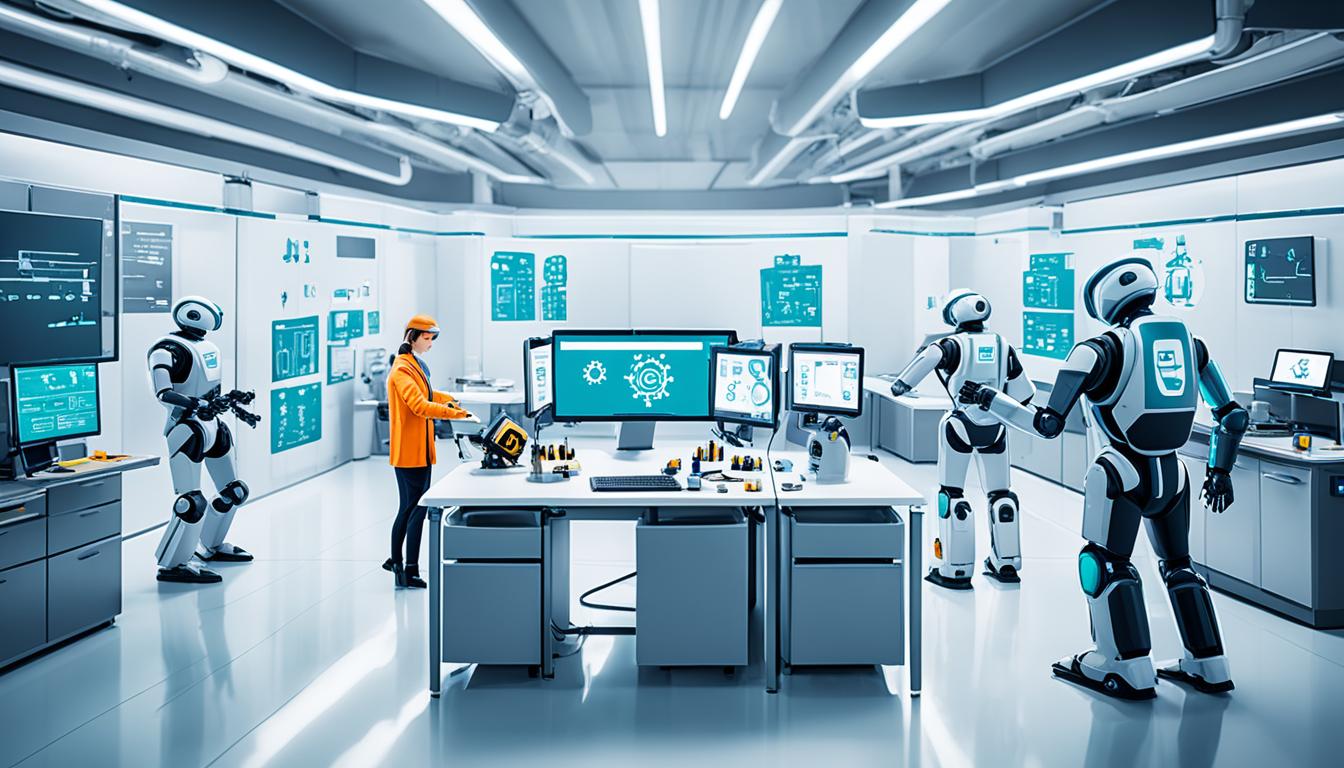
Conclusion
The future of robotics workplaces is set to revolutionize how we approach work. Automation and robotic technologies are advancing, requiring industries to focus on the impact on work. This ensures that robotics boosts productivity while prioritizing worker well-being. By tackling the challenges of these technologies, companies can build efficient, supportive work environments.
The robotics industry is more than just about replacing human jobs; it’s about creating new ones, especially in areas needing new skills and human-machine collaboration. It’s essential to invest in education, upskilling, and ongoing engagement. This will help fully harness robotics, making workplaces where humans and robots can excel together.
Striking a balance between autonomy and meaningful work is crucial as we progress. By promoting health and using robotic agents wisely, businesses can reduce presenteeism and enhance employee satisfaction. The key to successful robotics integration is cultivating a culture that values efficiency, health, and happiness in the workforce.


